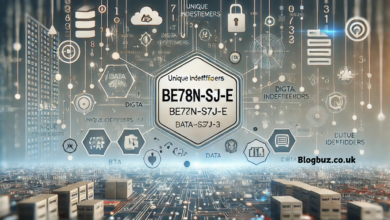Building Resilient IT Systems: Tips from IT Support Experts

Businesses of all kinds depend on their IT systems a lot for day-to-day tasks in today’s fast-paced digital world. Even a small problem with IT can cause a company to lose money, time, and even its image. This is why it’s important to make IT platforms that can handle this. An IT system is resilient if it can keep working well even when problems like hardware failure, cyberattacks, or natural events happen out of the blue.
To do this, companies need to put IT help at the top of their list of priorities to make sure their systems work, are safe, and can adapt to new situations. Businesses can strengthen their IT infrastructure with strategies that make it more reliable and flexible by working with a London IT support service. Working with professionals like Sereno IT Support also lets companies set up systems that are ready for the unexpected, so they can keep running no matter what.
This article will talk about some of the most important things that IT support professionals say you should do to make your IT systems strong so that they protect your data, make your business run more smoothly, and lessen the damage when something unexpected happens.
How to Understand Resilience in IT Systems
When it comes to IT systems, resilience means that an infrastructure can keep running even when it faces problems or fails. A durable IT system is strong, adaptable, and can quickly get back to normal after problems.
To really understand what makes an IT system strong, it’s helpful to break it down into its main parts:
Dependability is the system’s ability to work the same way over time with little downtime.
Scalability means that the system can get bigger or smaller as needs change without affecting its performance.
Redundancy: Having backup plans in place to make sure that important data and systems don’t get lost when something goes wrong.
Recovery means being able to quickly get things back to normal after a problem or disruption.
A good London IT support service will help companies set up these basic parts, making sure that systems are ready for both normal problems and those that come up out of the blue.
Advice on how to make IT systems that are strong
Spend money on strong infrastructure
A strong base is the first step in building a strong IT system. To lower the risk of system failures, businesses should buy high-quality gear and software. For instance, you could use computers, storage systems, and network devices that are designed for large businesses and can handle a lot of work. Businesses can make sure their infrastructure is designed to meet their needs by working with experienced IT support companies.
Also, companies should keep their systems up to date so that they don’t have any security holes caused by old gear and software. For the infrastructure to keep going smoothly, software patches, firmware updates, and hardware upgrades must be done on a regular basis.
Set up backup and redundancy systems
Adding redundancy is one of the most important things you can do to make your IT systems more reliable. Redundancy makes sure that if one part of the system fails, a backup part can take over right away to keep things running smoothly. For example, having more than one place to store data (like the cloud and physical data centers) makes sure that you can still view the data through the backup server if the main server goes down.
In the same way, companies should back up their important data regularly to keep it safe. Automated backups, which can be done on-site or through the cloud, make sure that data can be quickly restored if the system fails or is attacked.
Pay attention to cyber safety
Businesses today are in a lot of danger from cyberattacks. Security holes in ransomware, hacking, or malware can shut down an IT system and make it hard for a business to run. Businesses must put safety first if they want to build a strong IT system.
To keep people from getting into important systems without permission, the first step is to set up firewalls, antivirus software, and breach detection systems. To stay ahead of new cyber threats, it’s also important to keep these security methods up to date. To keep private information safe, you should encrypt it, and to make access more strict, you should require multiple factors of identification.
Another important step in making things more resilient is teaching workers how to spot possible cyber threats. Cybersecurity is not just the job of the IT staff; every worker needs to know the risks and follow best practices to keep the system safe.
Make sure it’s scalable.
When a company grows, its IT needs also grow. Making sure that your IT system can grow with your business is one of the most important parts of making it reliable. Scalability lets companies grow their operations without affecting how well or how reliably their IT system works.
A lot of businesses choose cloud-based solutions for their flexible IT systems because they make it easy to add or remove resources as needed. When businesses use cloud services, they can quickly increase their storage, computing power, and applications without having to buy a lot of new gear.
Businesses should make sure that their IT systems can react to new technologies as well as being able to grow as needed. For businesses to stay competitive, they need to add new tools, software, and processes to their IT systems as they come out.
Check on and improve performance
It’s not a one-time thing to build a strong IT system. Systems must be constantly checked and improved to make sure they stay strong and work well over time. Companies should buy tools that help them keep an eye on how well their systems are working, find possible slowdowns, and find problems before they get worse.
Businesses can also avoid security risks or hardware failures by monitoring them ahead of time and fixing them before they affect operations. An organization’s IT management plan should include regular reviews of employees’ work, checks on the system, and stress tests. Companies that work with an IT support service in London that focuses on tracking can rest easy knowing that their systems are in good hands.
Recovery from disasters and keeping business going
Because no IT system is completely fail-safe, disaster recovery and business continuity planning are important parts of being resilient. Businesses need a plan for how to get back to normal as soon as possible in case of a catastrophic failure.
A well-thought-out disaster recovery plan includes clear steps for getting back data, regaining access to systems, and talking to people who need to know about the situation. These plans should be tried and updated on a regular basis to make sure they work in real life.
A big part of many disaster recovery plans is cloud services, which let you store data somewhere else. Businesses can quickly get to their data and keep running with little to no problems if their hardware fails or there is a natural disaster.
Businesses no longer have a choice but to build secure IT systems; they have to. Businesses can make sure their IT systems are ready for anything with the right infrastructure, redundancy, security measures, scalability, and disaster recovery plans.
Businesses can use these strategies to build an IT environment that can handle changes and keep supporting growth and new ideas by working with skilled professionals. A resilient IT system not only lives but also thrives, making sure that businesses can keep running, keep data safe, and give great customer service no matter what problems come up.




